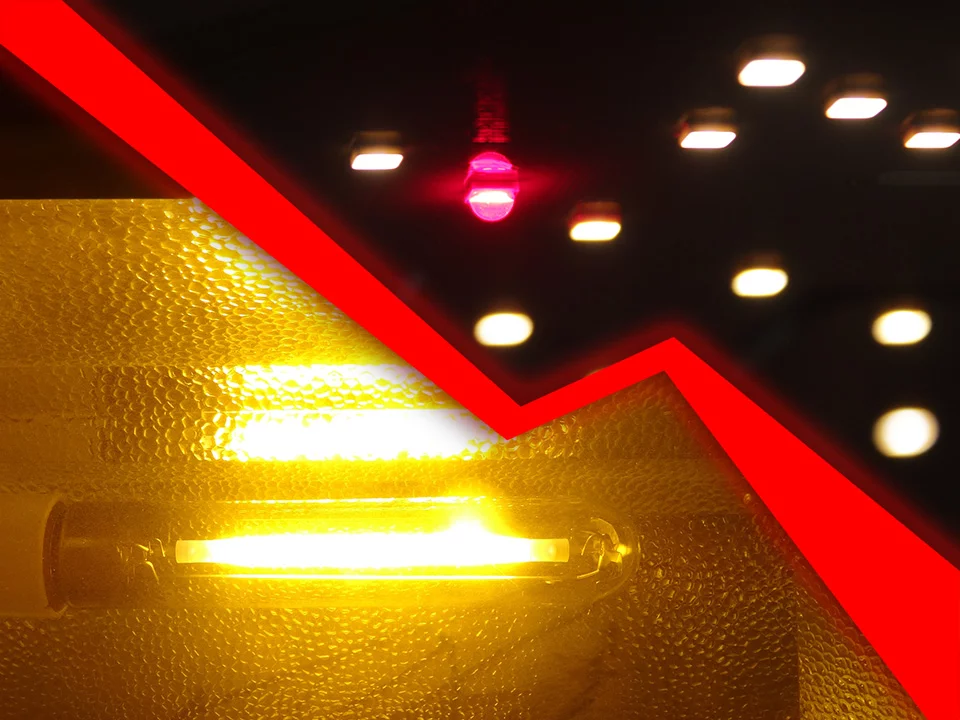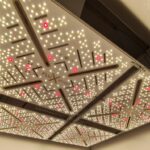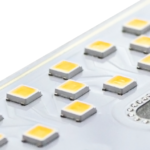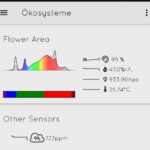At Crescience, we have been working with LEDs for plant lighting since 2016. Even then it was clear that the sodium vapour lamp (HPS) would be replaced by LEDs - only how and when was still unclear. The light-emitting diode in horticulture was still in its infancy. In the meantime, LEDs have matured and surpass the sodium vapour lamp in all scenarios.
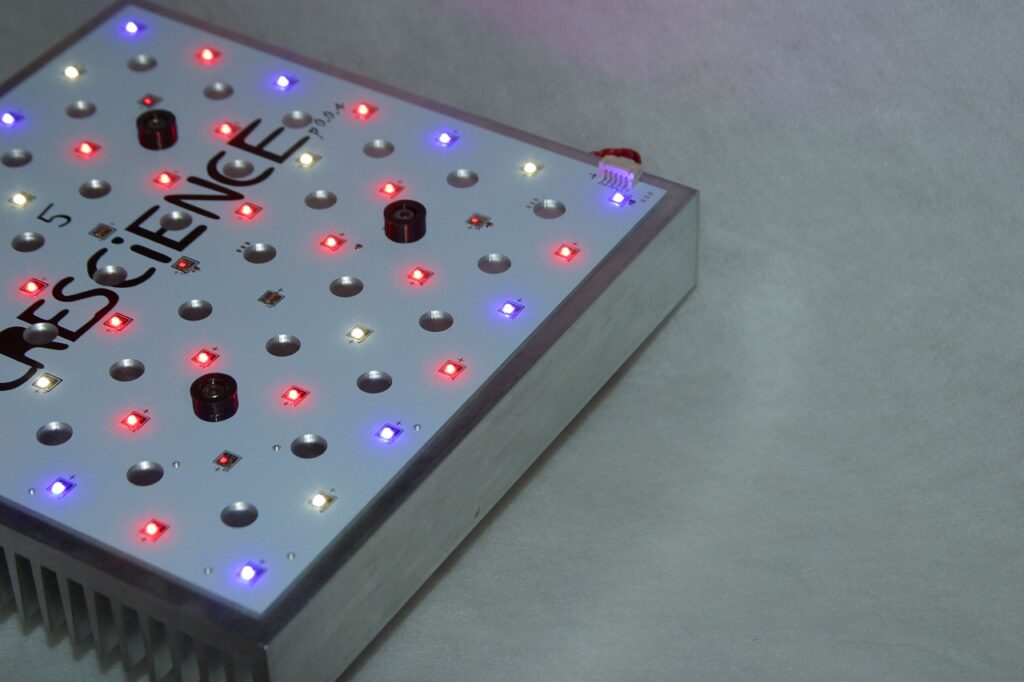
HPS versus LED in practice
The values on the data sheets speak for themselves. Modern LEDs can boast module efficiencies beyond 3 µmol/J, whereas the Sodium vapour lamp is specified as 1.6 µmol/J. A good LED can thus emit almost twice the amount of photons in the PAR range emit, or save just under half of the energy.
However, these measured values disregard losses in the ballasts, as well as optical losses due to reflectors or lenses and the absorption of the walls. Mapping the PAR values on a simulated cultivation area provides information on how the systems perform in practice. We collected comparative values with our automated test stand:
How to replace HPS with LED
The Philips SON-T PIA Plus 600W in PAR test
For the tests, we used a brand new Philips SON-T Pia Plus 600W lamp on a GIB digital ballast. The Adjust-A-Wings Avenger Medium was used as reflector in the middle position. When measured at a distance of 40 cm, the area could be illuminated best and most efficiently without causing too strong hotspots. The old technique produces a respectable photon flux, but requires a lot of electricity.
HPS PAR Test
30 cm distance, "Super Spreader
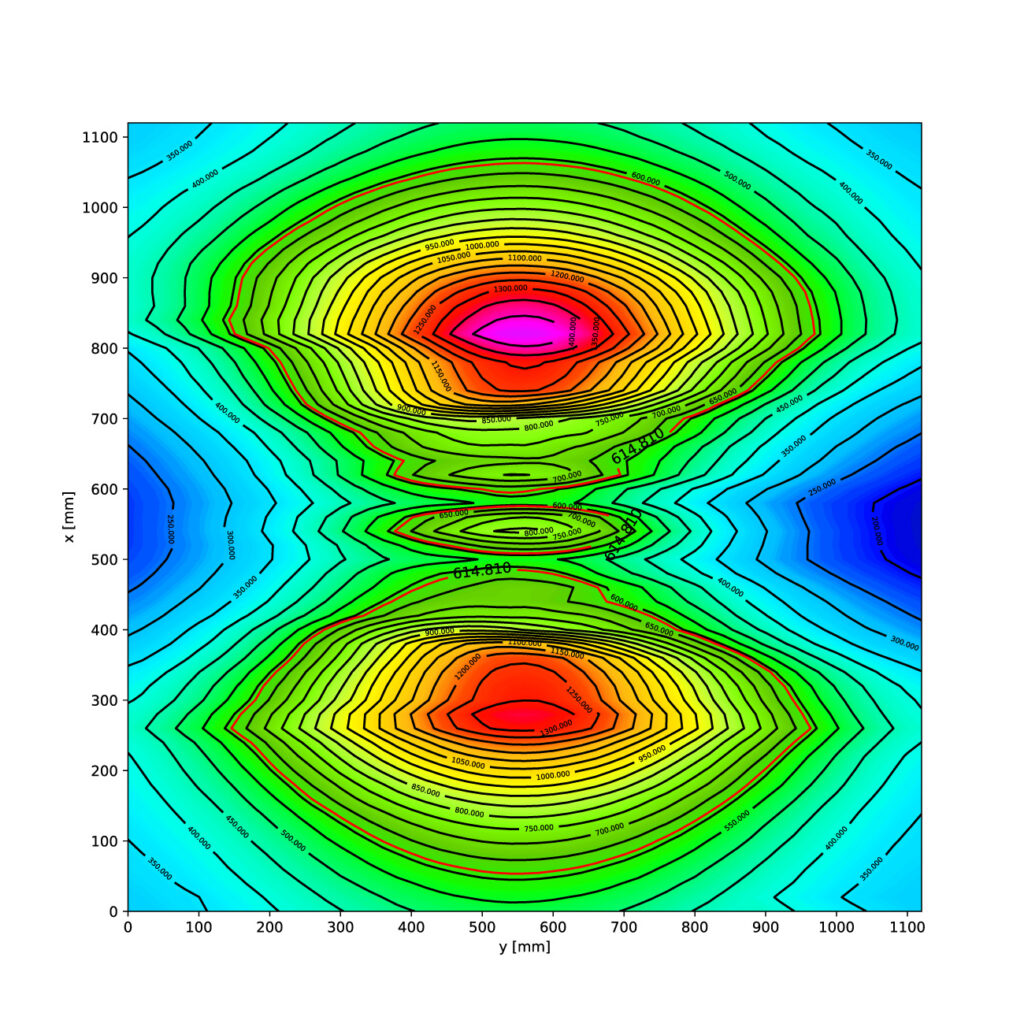
usable PAR ∅: 615 µmol/m²
PPFD/W: 1.38 µmol/m²/J
40 cm spacing, "Super Lumen 660W"
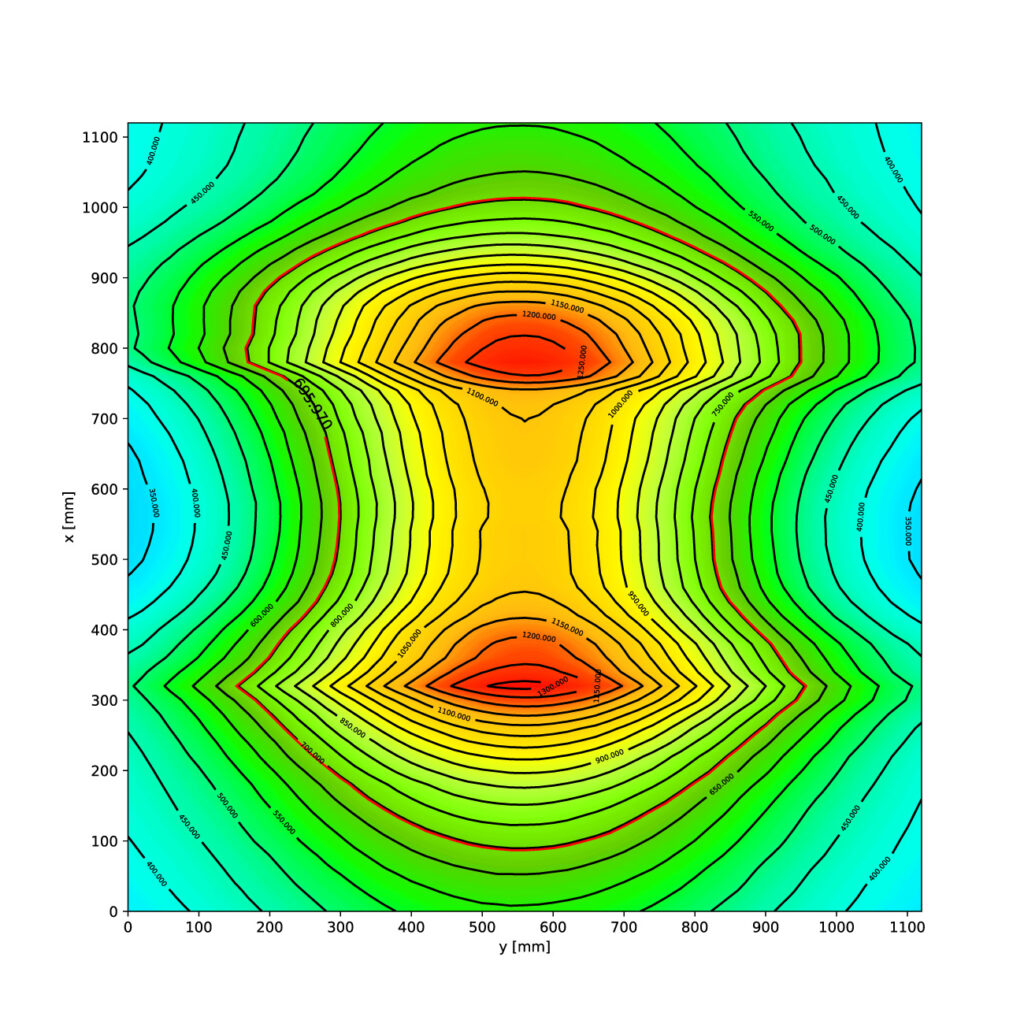
Usable PAR ∅: 696 µmol/m²
PPFD/W: 1.43 µmol/m²/J
Budget LED PAR Test
For comparison, we measure an inexpensive LED system with our "The Frugal Four" reference setup. Those who want to replace their HPS with LED will usually be looking for a very economical system. Our budget setup consists of four FLUXshield Silver, powered by an HLG-480H-C2100B.
If two of our "The Wingman Mk II" kits are used, approximately the same values can be expected.
The LED boards can be arranged as needed to optimise the illumination of the planted areas. For our test, the FLUXshields are mounted in the far corners to fully utilise the effective growing area.
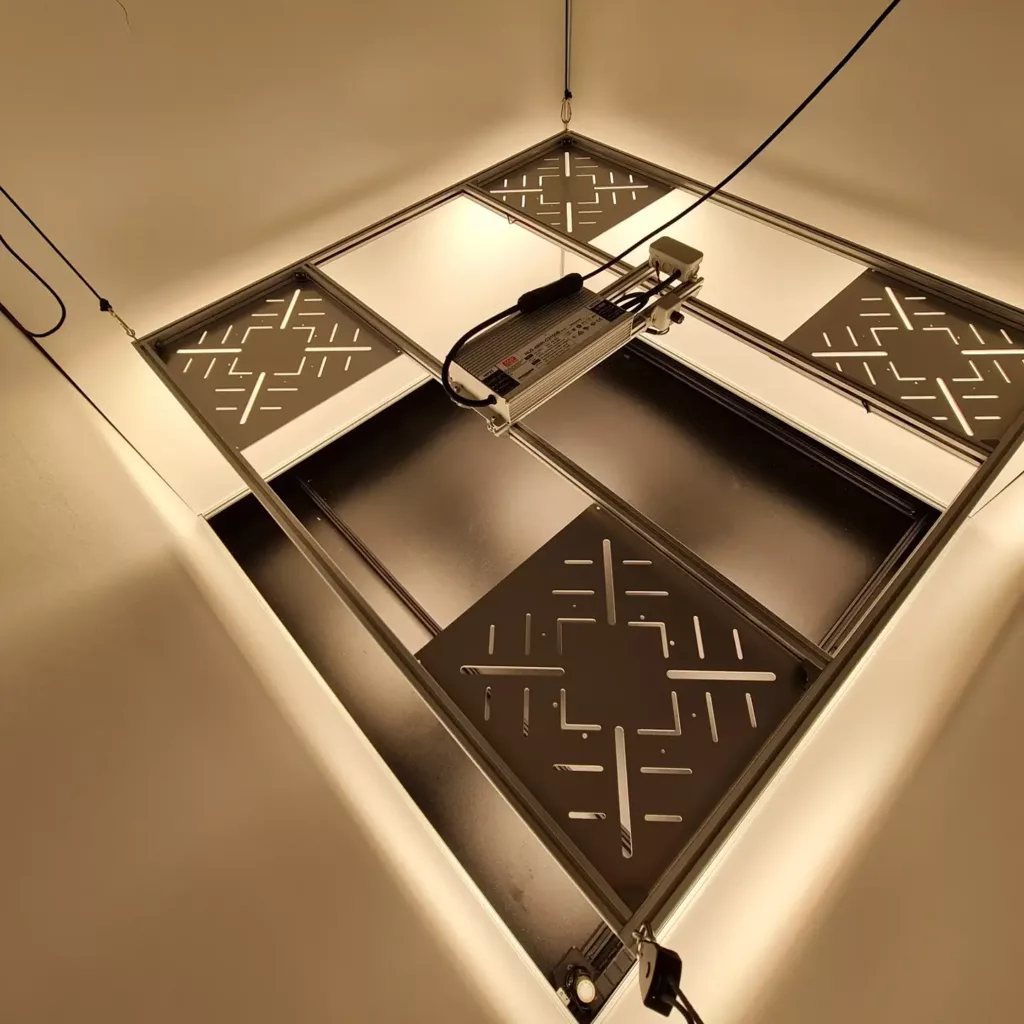
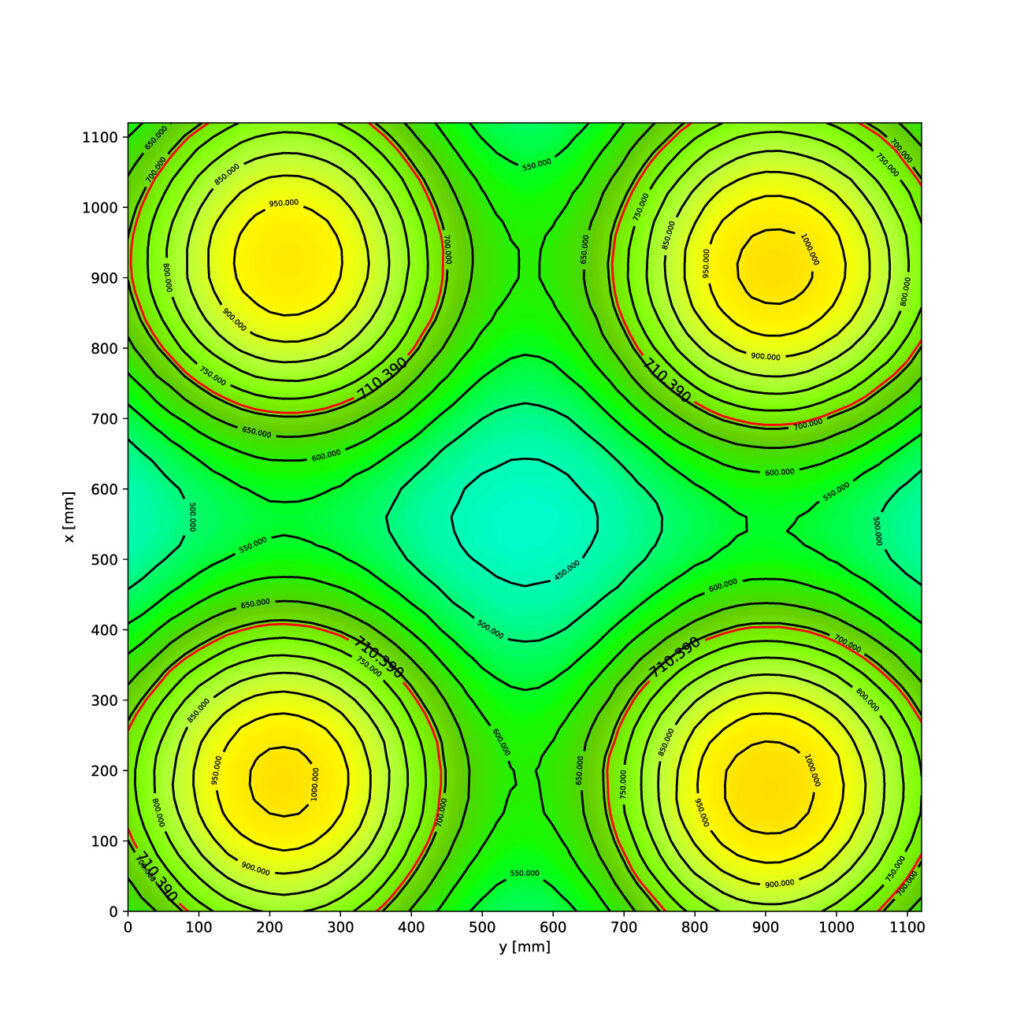
Usable PAR ∅: 710 µmol/m²
PPFD/W: 2.28 µmol/m²/J
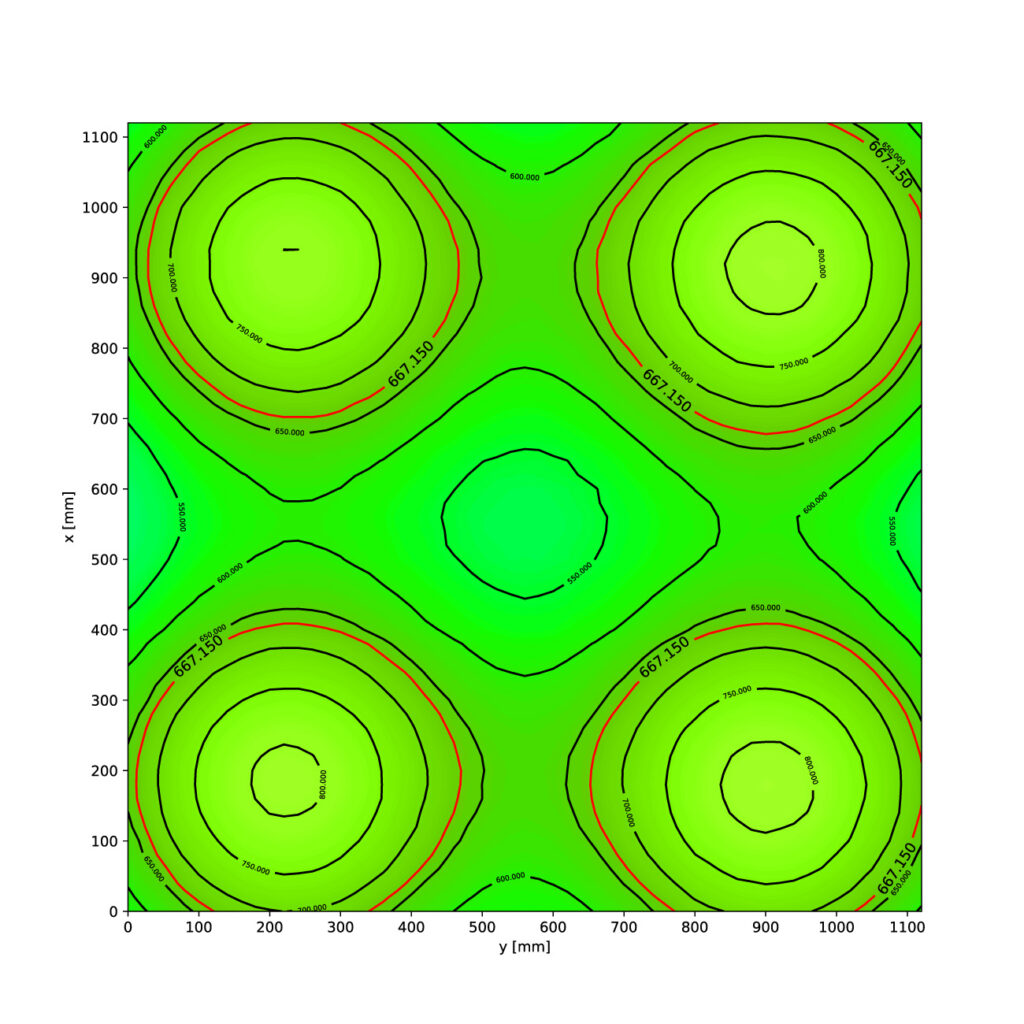
Usable PAR ∅: 667 µmol/m²
PPFD/W: 2.14 µmol/m²/J
High End LED PAR Test
To test the limits of what is possible, we carried out another measurement with "The Generous Four" reference design. For extreme efficiency, we use an HLG-480H-C2100B driver, but for CO2 supplementation or larger areas, the kit can also be equipped with a 600W driver. The PAR values can also be achieved with 2x "The Wingcommander".
The large-area distribution of the LEDs enables operation extremely close to the plants, which further improves the photon yield. As the FLUXshield Gold also contains far-red LEDs whose radiation is not detected in the PAR range, the efficiency of this system is even higher.
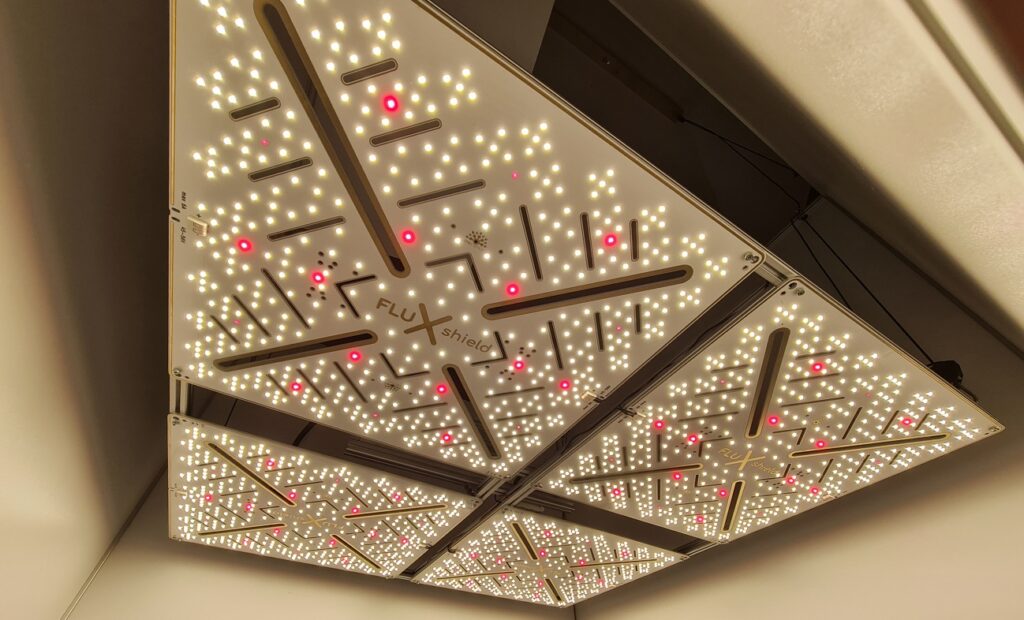
15 cm distance
The Generous Four
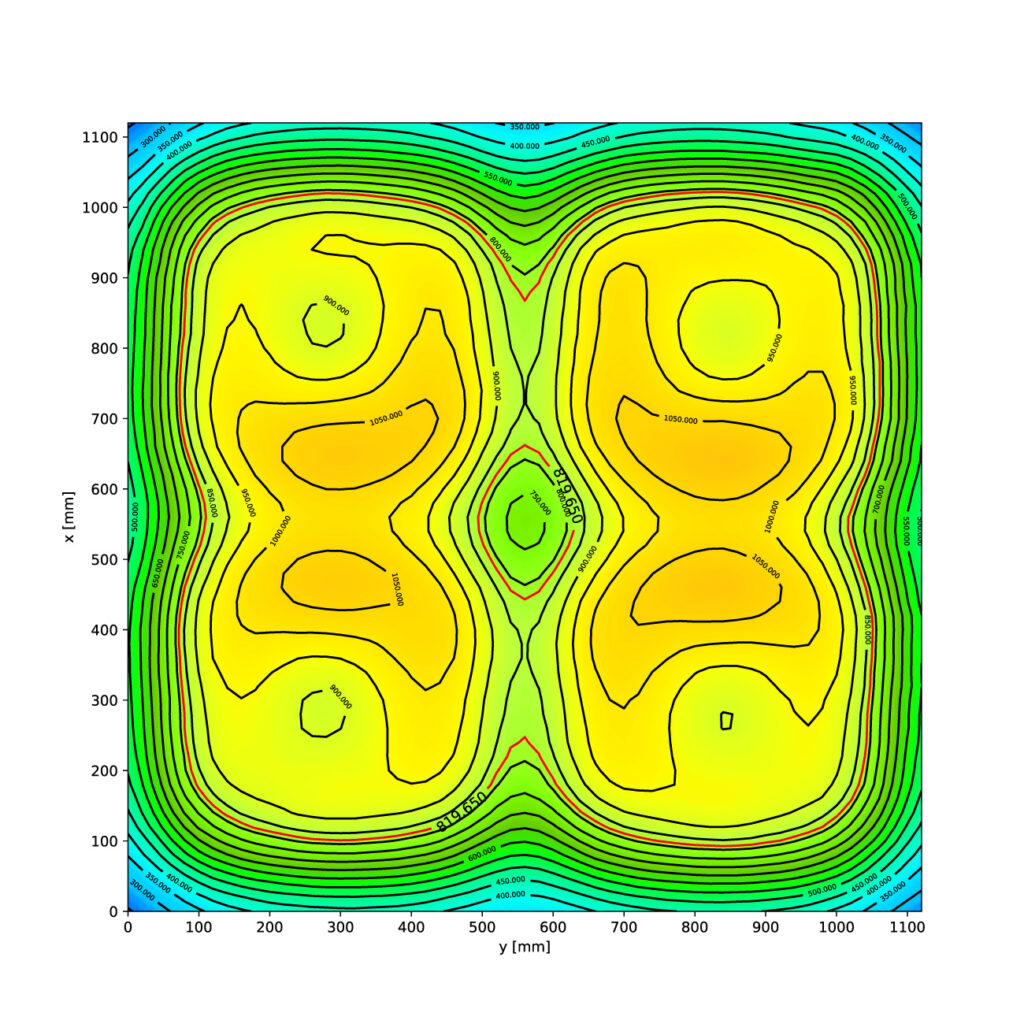
Usable PAR ∅: 820 µmol/m²
PPFD/W: 2.68 µmol/m²/J
30 cm distance
The Generous Four
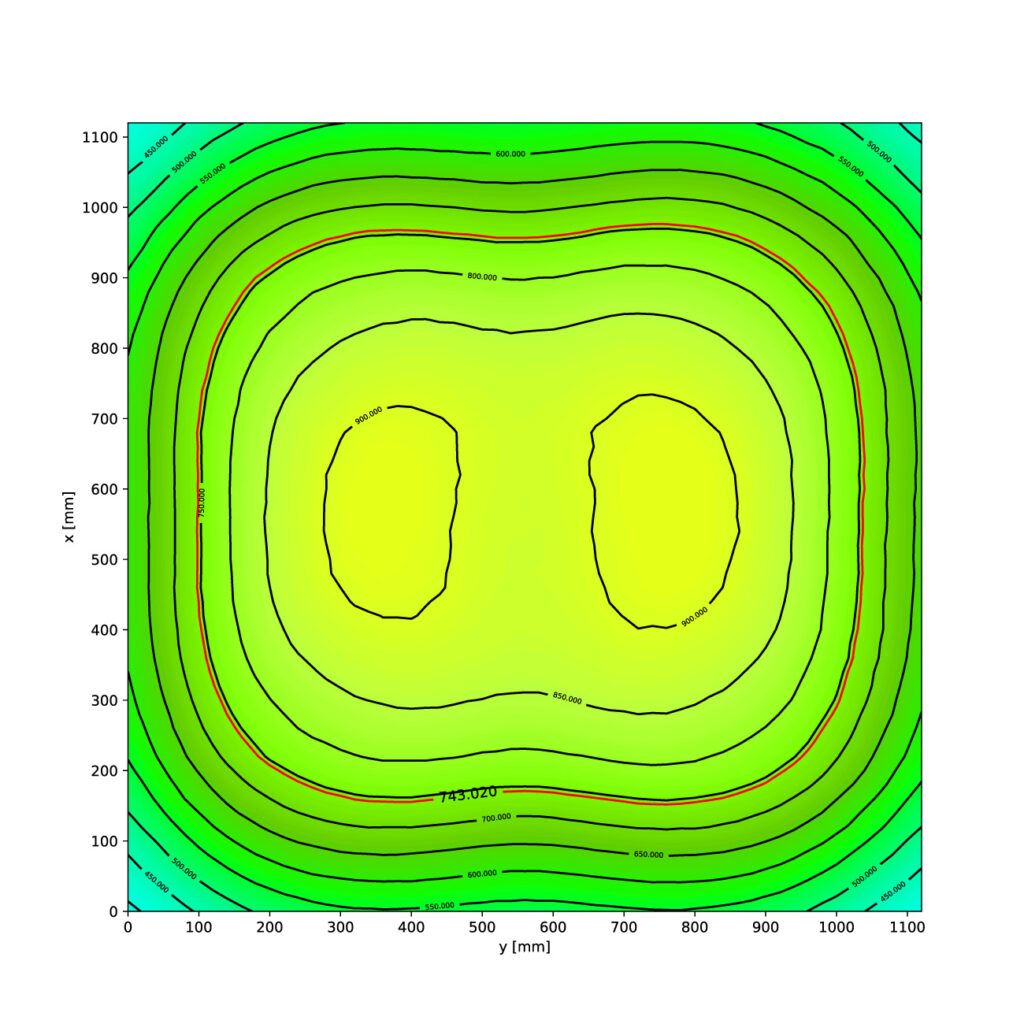
Usable PAR ∅: 743 µmol/m²
PPFD/W: 2.43 µmol/m²/J
Recalculated: Which grow light is more economical?
A sodium vapour lamp like the one we tested costs about 290 € to purchase, with the costs being broken down as follows (as of July 2021):
- Digital ballast GIVE NXE 600W: € 160
- Reflector with lamp socket Adjust-A-Wings Avenger Medium: €90
- Illuminant Philips SON-T PIA Plus 600W: 40 €
This system can easily be surpassed with our setup "The Frugal Four" or 2x "The Wingman Mk II". The costs for this can be estimated at around 600 €.
The acquisition costs therefore differ by €310 in favour of the sodium vapour lamp. Now let's assume operation in 660 W Super Lumen mode. This corresponds to 700 W power consumptionto reach an average of 700 µmol/m² in a 120 x 120 cm tent.
With the LED setup "The Frugal Four", we achieve this value at a distance of 30 cm and 450 W Power consumption.
How long will it now take to recoup the €310 additional cost of the purchase through the electricity bill?
When illuminating photoperiodic plants, one can assume an average of 14 hours of exposure per day (one month 18 hours, two months 12 hours). The energy price per kilowatt hour is about 0.29 €. The "Frugal Four" LED system saves about 3.5 kWh per day (250 W consumption difference * 14 hours).
Save one euro every day!
Replacing the HPS with LED results in a saving of 1 € per day and a payback after 310 days!
In addition, the lamp has to be replaced after about one year. If you replace the HPS with LED, you can get by for up to 10 years without changing the lamp. Due to the more uniform illumination of the cultivated area, one can assume a higher yield under the LED setup. The more balanced light spectrum and the cooler temperatures under the lamp also lead us to expect significant improvements in quality and taste.

Properties of the sodium vapour lamp
Many indoor gardeners still appreciate the advantages of the sodium vapour lamp. The technology is simple and inexpensive to purchase, and replacement bulbs are available almost everywhere. Until recently, however, the efficiency of the HPS outshone everything else available on the market. This is why the orange-glowing bulbs are still found not only in grow boxes but also in street lighting.
Efficiency - HPS vs. LED
In the age of the sodium vapour lamp, there was virtually only one standard for light: lumens. This Metric is in the field of plant lighting but obsolete. The typical lumen efficiency of sodium vapour lamps is 130 lm/W, while the double-ended 1000W models even reach 150 lm/W. Expressed in PPE, this means 1.6 µmol/J, up to 2 µmol/J for the top performers. This is still a good standard, considering that fluorescent tubes and energy-saving lamps manage just 60 lm/W and 0.7 µmol/J respectively.
At first, COB LEDs (chip on board technology) were serious competitors for the HPS on the market. 160-180 lm/W and 1.8-2.2 µmol/J were suddenly affordable due to the high power density of COBs. However, only current SMD LED Grow LEDs (z. e.g. Samsung LM301) that enable full-spectrum illumination with more than 200 lm/W and over 3.0 µmol/y. This is almost a doubling of the photon yield compared to the sodium vapour lamp. This makes it worthwhile to replace the HPS with LED after only a short time.
Replace HPS with LED - availability and costs
Due to their widespread use, fixtures and lamps for sodium vapour lamps are very affordable. At least this is true if you only consider the purchase costs. For about 100 €, you can get a complete 600 Watt HPS system. However, after one year at the latest (better after 6 months), a new bulb is due for 20-60 € due to the loss of luminosity. And then, of course, there is the electricity bill. For the operation of sodium vapour lamps, you have to calculate about 80% more electricity costs than with a modern LED system.
While there is a big cost saving on the electricity bill when you convert to LED, there is a much larger investment to start with for the purchase of the plant lamp. You have to calculate at least €1 - €1.50 per watt for current, efficient grow LEDs. If you are looking for a good plug-and-play system, this can be considerably more. On the other hand, the life expectancy of high-quality LEDs is around 8-10 years, and the best models can theoretically last over 100,000 hours.
The main problem is availability. Specialist shops usually stock high-priced lamps that are also convincing in terms of quality. In the online trade, however, there is a proliferation of dubious dealers who outbid each other with superlatives and misleading product descriptions. For beginners, good offers on Amazon and Ebay are difficult to identify.
Thermal radiation
While most indoor growers have problems removing excess heat from the grow tent, there are said to be isolated cases where radiant heat is needed to reach acceptable temperatures in winter. This can be the case in uninsulated attics, for example. Because the sodium vapour lamp converts a large part of the energy used into heat output, this lamp technology can be helpful in such cases.
In summer, however, the scenario turns in favour of LED technology, as only a minimum of heat radiation is generated here. Up to 80% of the energy (Osram Oslon Square Gen 4) can be converted into photosynthetically effective photons. The low power loss is dissipated upwards via a heat sink, so that only minimal heat is applied to the mounting surface. Those who want to replace HPS with LED can therefore also benefit from lower leaf temperatures.
Conclusion: Why should I replace my HPS with LED?
It is therefore always worthwhile from various points of view to replace an HPS with an LED. Be it the better illumination of the entire cultivation area without hotspots, the cost savings after a short time or the reduction of temperatures in summer. The only question is which LED setup is the right one. We have designed different options for all cultivation areas.
The "High Value" lighting concepts appeal above all to gardeners who are looking for the fastest possible payback.
For professionals, we offer a product range called "Ultimate Performance". This is characterised by elaborate and partly adjustable spectra, as well as the greatest possible efficiency.


